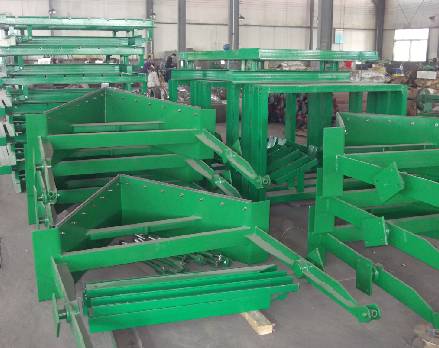 Afrikaans
Afrikaans  Albanian
Albanian  Amharic
Amharic  Arabic
Arabic  Armenian
Armenian  Azerbaijani
Azerbaijani  Basque
Basque  Belarusian
Belarusian  Bengali
Bengali  Bosnian
Bosnian  Bulgarian
Bulgarian  Catalan
Catalan  Cebuano
Cebuano  Corsican
Corsican  Croatian
Croatian  Czech
Czech  Danish
Danish  Dutch
Dutch  English
English  Esperanto
Esperanto  Estonian
Estonian  Finnish
Finnish  French
French  Frisian
Frisian  Galician
Galician  Georgian
Georgian  German
German  Greek
Greek  Gujarati
Gujarati  Haitian Creole
Haitian Creole  hausa
hausa  hawaiian
hawaiian  Hebrew
Hebrew  Hindi
Hindi  Miao
Miao  Hungarian
Hungarian  Icelandic
Icelandic  igbo
igbo  Indonesian
Indonesian  irish
irish  Italian
Italian  Japanese
Japanese  Javanese
Javanese  Kannada
Kannada  kazakh
kazakh  Khmer
Khmer  Rwandese
Rwandese  Korean
Korean  Kurdish
Kurdish  Kyrgyz
Kyrgyz  Lao
Lao  Latin
Latin  Latvian
Latvian  Lithuanian
Lithuanian  Luxembourgish
Luxembourgish  Macedonian
Macedonian  Malgashi
Malgashi  Malay
Malay  Malayalam
Malayalam  Maltese
Maltese  Maori
Maori  Marathi
Marathi  Mongolian
Mongolian  Myanmar
Myanmar  Nepali
Nepali  Norwegian
Norwegian  Norwegian
Norwegian  Occitan
Occitan  Pashto
Pashto  Persian
Persian  Polish
Polish  Portuguese
Portuguese  Punjabi
Punjabi  Romanian
Romanian  Russian
Russian  Samoan
Samoan  Scottish Gaelic
Scottish Gaelic  Serbian
Serbian  Sesotho
Sesotho  Shona
Shona  Sindhi
Sindhi  Sinhala
Sinhala  Slovak
Slovak  Slovenian
Slovenian  Somali
Somali  Spanish
Spanish  Sundanese
Sundanese  Swahili
Swahili  Swedish
Swedish  Tagalog
Tagalog  Tajik
Tajik  Tamil
Tamil  Tatar
Tatar  Telugu
Telugu  Thai
Thai  Turkish
Turkish  Turkmen
Turkmen  Ukrainian
Ukrainian  Urdu
Urdu  Uighur
Uighur  Uzbek
Uzbek  Vietnamese
Vietnamese  Welsh
Welsh  Bantu
Bantu  Yiddish
Yiddish  Yoruba
Yoruba  Zulu
Zulu conveyor belt system parts
Understanding Conveyor Belt System Parts
Conveyor belt systems are essential components in modern material handling and manufacturing processes. They offer a streamlined method of transporting goods and materials from one point to another, enhancing efficiency and productivity across various industries. Understanding the different parts of a conveyor belt system is crucial for anyone looking to implement or maintain these systems effectively. In this article, we will explore the key components that make up a typical conveyor belt system and their respective functions.
1. Belt
The belt itself is the most critical element of the conveyor system. It is typically made from various materials, including rubber, fabric, metal, or plastic, depending on the application requirements. The belt’s design and construction determine its strength, flexibility, and suitability for different materials. The belt transports items along the conveyor's path, and its choice significantly impacts the system's overall efficiency and capability.
2. Drive Mechanism
The drive mechanism consists of the motor, pulleys, and the conveyor belt's tensioning system. Typically, an electric motor provides power to the drive pulleys, causing them to rotate and move the belt. The drive mechanism must be robust and efficient, as it directly influences the speed and performance of the conveyor system. Proper alignment and maintenance of the drive components are essential to prevent belt slippage and ensure smooth operation.
3. Idlers
Idlers are the rollers that support the belt and help maintain its proper alignment. They are strategically placed along the conveyor to guide the belt’s movement and reduce friction. Properly positioned idlers can minimize belt wear and extend the system's lifespan. There are different types of idlers, including troughing idlers, flat idlers, and return idlers, each serving specific functions to support and stabilize the belt.
The take-up system keeps the conveyor belt taut, accommodating any slack that may develop over time due to wear or stretching. This component is crucial for preventing belt misalignment and ensuring consistent tension throughout the system. Take-up systems can be manual or automatic, with automatic systems providing real-time tension adjustments to enhance operational efficiency.
conveyor belt system parts

5. Chassis or Frame
The chassis or frame forms the structural backbone of the conveyor system. It supports all other components and provides stability during operation. The material and design of the chassis can vary significantly based on the application, load requirements, and environmental conditions. A robust and well-designed frame is critical for minimizing vibration and disruption during operation.
6. Controls and Sensors
Modern conveyor belt systems are often equipped with various controls and sensors to monitor performance and optimize operation. These may include speed controls, load sensors, and safety switches. Controls allow for automated operation, enabling operators to adjust speed or shut down the system in case of an emergency. Sensors enhance safety and efficiency by providing real-time feedback on the system’s performance and operational status.
7. Loading and Unloading Sections
Loading and unloading sections are essential for facilitating the transfer of materials onto and off the conveyor system. These sections can be equipped with various features, including chutes, hoppers, or diverters, designed to accommodate specific materials or product types. Effectively managing these transitions is essential for ensuring a smooth flow of materials and preventing potential jams.
8. Safety Features
Safety is a critical aspect of any conveyor system. Various safety features, such as guards, emergency stop buttons, and warning lights, are integrated into the design to protect operators and prevent accidents. Regular maintenance and inspections are also vital to keeping safety features operational and ensuring the conveyor system complies with relevant regulations and standards.
Conclusion
In summary, understanding the various components of a conveyor belt system is essential for optimizing its use in material handling and manufacturing. Each part, from the belt and drive mechanism to the idlers and safety features, plays a crucial role in ensuring that the system functions efficiently and safely. With proper maintenance and attention to these components, businesses can improve productivity, minimize downtime, and enhance overall operational effectiveness. Whether in a manufacturing plant, distribution center, or warehouse, effectively managing conveyor belt systems is vital to success in today’s fast-paced industrial landscape.
-
Revolutionizing Conveyor Reliability with Advanced Rubber Lagging PulleysNewsJul.22,2025
-
Powering Precision and Durability with Expert Manufacturers of Conveyor ComponentsNewsJul.22,2025
-
Optimizing Conveyor Systems with Advanced Conveyor AccessoriesNewsJul.22,2025
-
Maximize Conveyor Efficiency with Quality Conveyor Idler PulleysNewsJul.22,2025
-
Future-Proof Your Conveyor System with High-Performance Polyurethane RollerNewsJul.22,2025
-
Driving Efficiency Forward with Quality Idlers and RollersNewsJul.22,2025





























